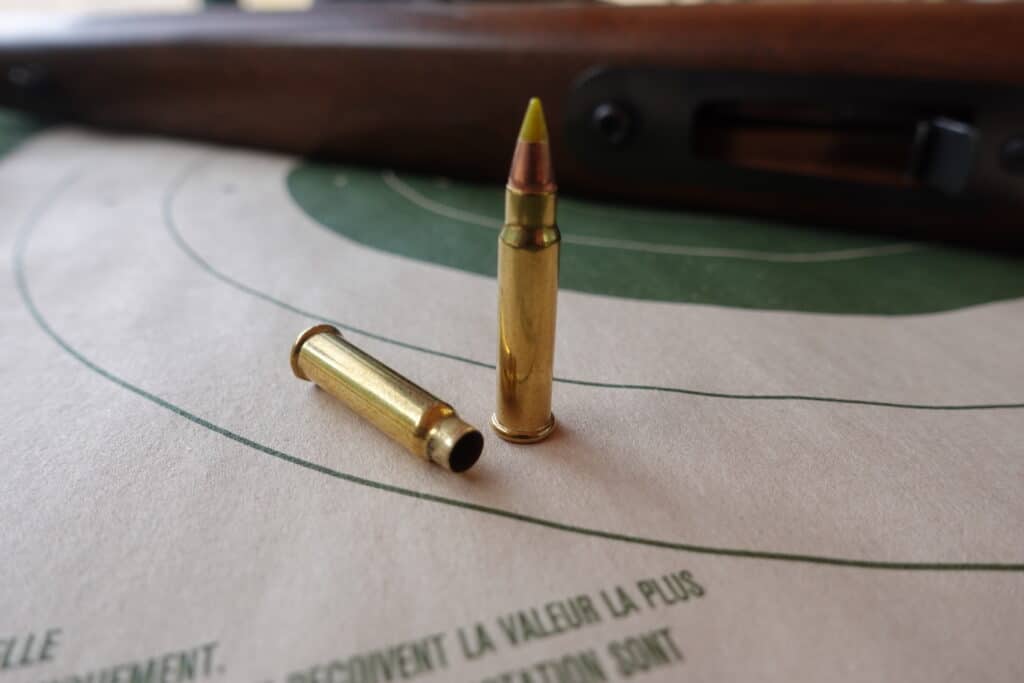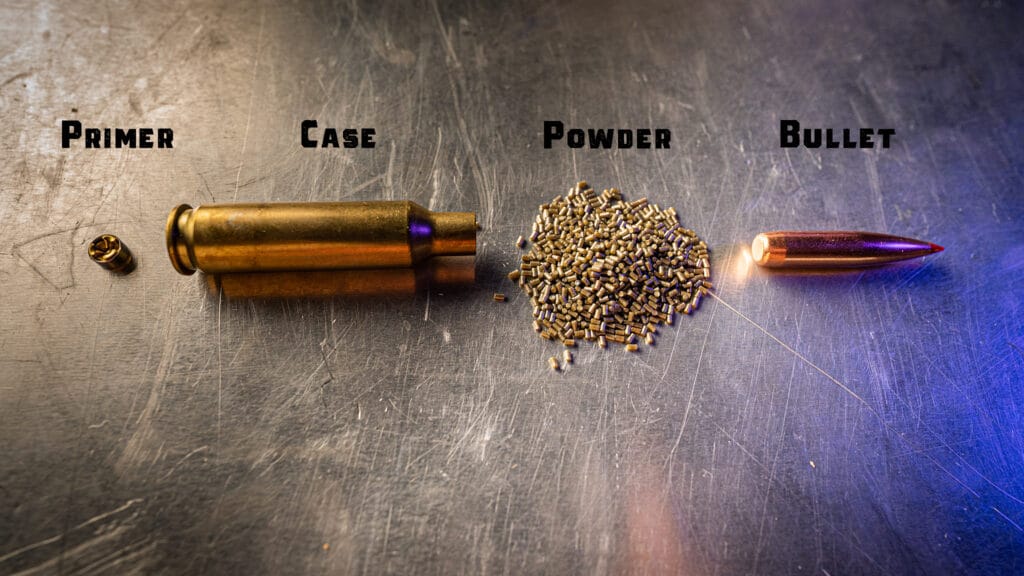Frangible Ammo: What is it, and when should you use it?

Frangible ammo is a specialty type of rifle and pistol ammunition. The bullets are designed to disintegrate when they impact a hard target. Ammo that uses these types of bullets has both pluses and minuses over traditional ammo.
Frangible ammo uses bullets made of compressed metal powder. Generally, frangible ammo is for shooting at very close steel targets so that no metal splatter of a bullet comes back at the shooter. Frangible ammo is usually more expensive and less common than traditional lead ammo.
Still, there are some reasons people choose to use frangible ammo. I’ll discuss those reasons along with some of the basic differences between it and more traditional options.
What is a Traditional Bullet?
For someone very new to shooting and firearms, let me first explain what traditional ammo types are. This way, you can understand how frangible ammo is different.
Lead is the most common bullet material in the world. It is dense, has a low melting point, and is easily formed into bullets even at room temperature. It is also an abundant material, something that’s always a plus for a single-use item.
Bullets can either be made entirely out of lead or mostly out of lead. Pistol bullets meant for practice and competition are often entirely made of lead. Rifle bullets and most pistol bullets loaded into factory ammunition are surrounded by a copper jacket though. This jacket material increases the cost but also protects the softer lead core during the firing process.
Because of lead’s softness, bullets can be designed to expand or deform in flesh, which is good for both self-defense and hunting.
Frangible Bullets are Entirely Different
A frangible bullet starts its life as a metal powder, usually tin, zinc, copper, or tungsten. It will then have an adhesive added to it and will be compressed into the shape of a bullet. This results in a solid object that can be loaded into ammunition, shot out of a gun and then fragments back into a powder when hitting a hard target.
Because most metals are less dense than lead, frangible bullets are lighter in weight. This is partly because cartridges are only designed to shoot bullets up to a certain size, and partly because the materials and process to make frangible bullets are expensive.
Frangible ammo is almost entirely used for practice and training. In recent years though, frangible bullets have been loaded into defense ammunition.

What are the Advantages of Frangible Ammo?
When you absolutely must shoot at a hard target at a very close distance, frangible ammo is desirable. These bullets can be counted upon to turn to dust on impact, which means the shooter can be very close to the impact and not get pelted by fragments.
For military and police training in Close Quarters Battle (CQB) and Military Operations on Urban Terrain (MOUT), they have their applications. Training on static ranges with stationary paper targets is only going to teach basic shooting skills. More involved training teaches advanced skills while under stress.
Buildings designed for firearms use, AKA “shoot houses”, teach skills that can only be taught through hands-on training. Frangible ammo gives the trainer more options when designing scenarios. This is in both how close steel targets can be put to the shooting positions and what angles of fire can be considered safe.
Frangible bullets are also generally considered to be non-toxic, though this can be misunderstood as well. Because most of the primers used in ammunition create a small amount of airborne lead when used, this doesn’t mean just because ammunition uses frangible bullets it is non-toxic. This is an important distinction for reloaders, as very few primers are non-toxic as well.
Airborne toxins are a non-factor for outdoor shooting and, in my opinion, for indoor shooting with good ventilation as well.
What are the Advantages of Traditional Ammo?
The big advantage is cost. Traditional bullets are much less expensive to produce, both because of materials and economy of scale. Cheaper ammunition equals more training for the same price. The second biggest advantage is product availability. Ammo panics aside, traditional ammo is available anywhere.
Traditional bullets are also what almost all hunting and self-defense ammo use. I am of the opinion frangible self-defense ammo is a gimmick. They are marketed to people who live in apartments and worry about over-penetration. Police officers are dispatched to those same types of buildings and shoot violent criminals with traditional ammo.
For hunting, you certainly are going to want to use a traditional bullet, or an expanding copper bullet, for big game animals. For small game and varmints, there are both options available.
Do I need Frangible Ammo to Shoot at Steel Targets?
Generally, you do not. I have shot at steel targets for more than a decade in shooting competitions and never used frangible ammo. To be clear, there are safety rules in place on how close steel targets can be shot at in competitions. The International Defense Pistol Association, for example, doesn’t allow shooting at steel targets closer than 10 yards.
Eye protection is still required as well. I’ve stopped counting the number of times I’ve been nicked or cut by fragments of copper jackets at competitions even while following every safety rule. It just happens, so wear eyeglasses. Using lead bullets dramatically reduces this risk, but it can still happen.
The steel targets I have shot ar have been a variety of mild steel and AR500 steel. Getting hit by bullet fragments can happen with either type of target.

Are There Advantages When Shooting at Paper Targets?
No, there are no advantages whatsoever. With any soft target where a bullet cleanly passes through, it doesn’t matter what type of bullet is used. The only consideration would be the backstop behind it.
How do I Know if my Ammo is Frangible?
If the ammunition you are using is frangible, the packaging will be marked as such. Because it is costlier, ammunition manufacturers will mark it as such. Ammunition that is out of its original packaging isn’t so clear cut, but frangible bullets will typically have a dull, powdery finish as opposed to shiny metal.
Frangible ammo is not at all common compared to traditional ammo.
Can I Reload Frangible Bullets?
Yes, but there are fewer bullet options available to choose from. SinterFire makes handgun bullets and ,22 caliber rifle bullets. The Barnes MPG line and Varmint Grenade line are frangible as well. Expect to pay a price premium and only find them in common calibers.
